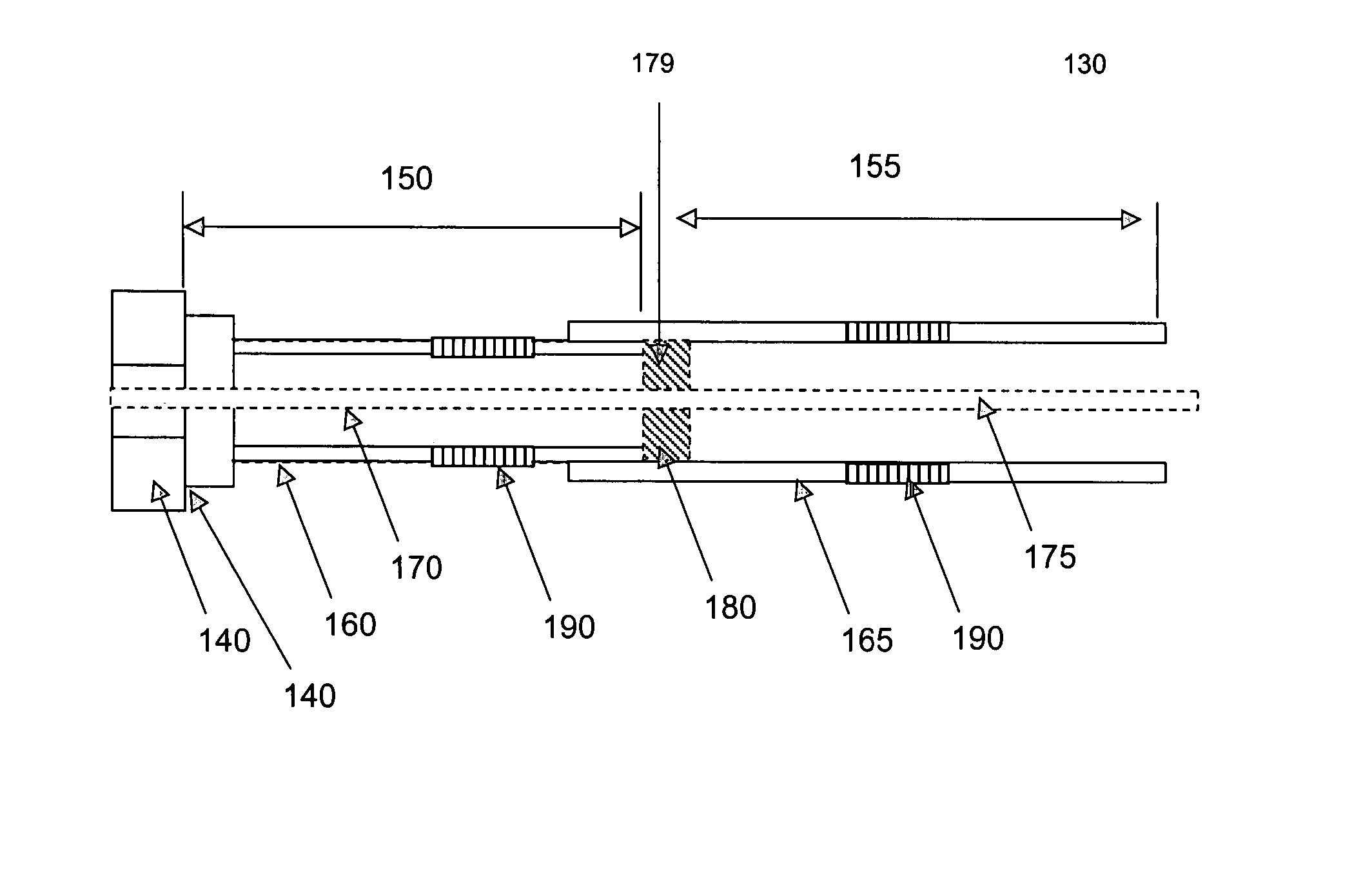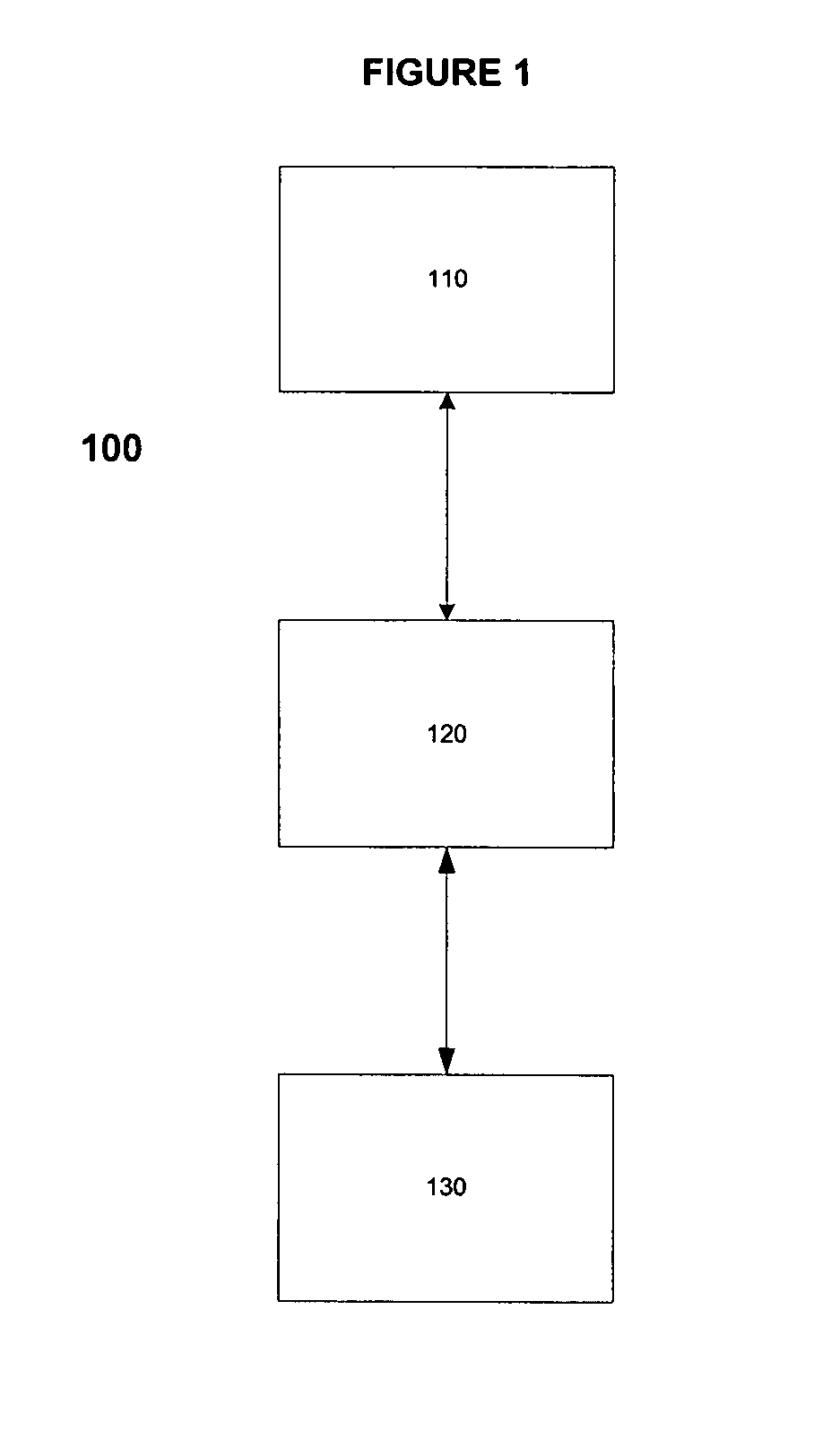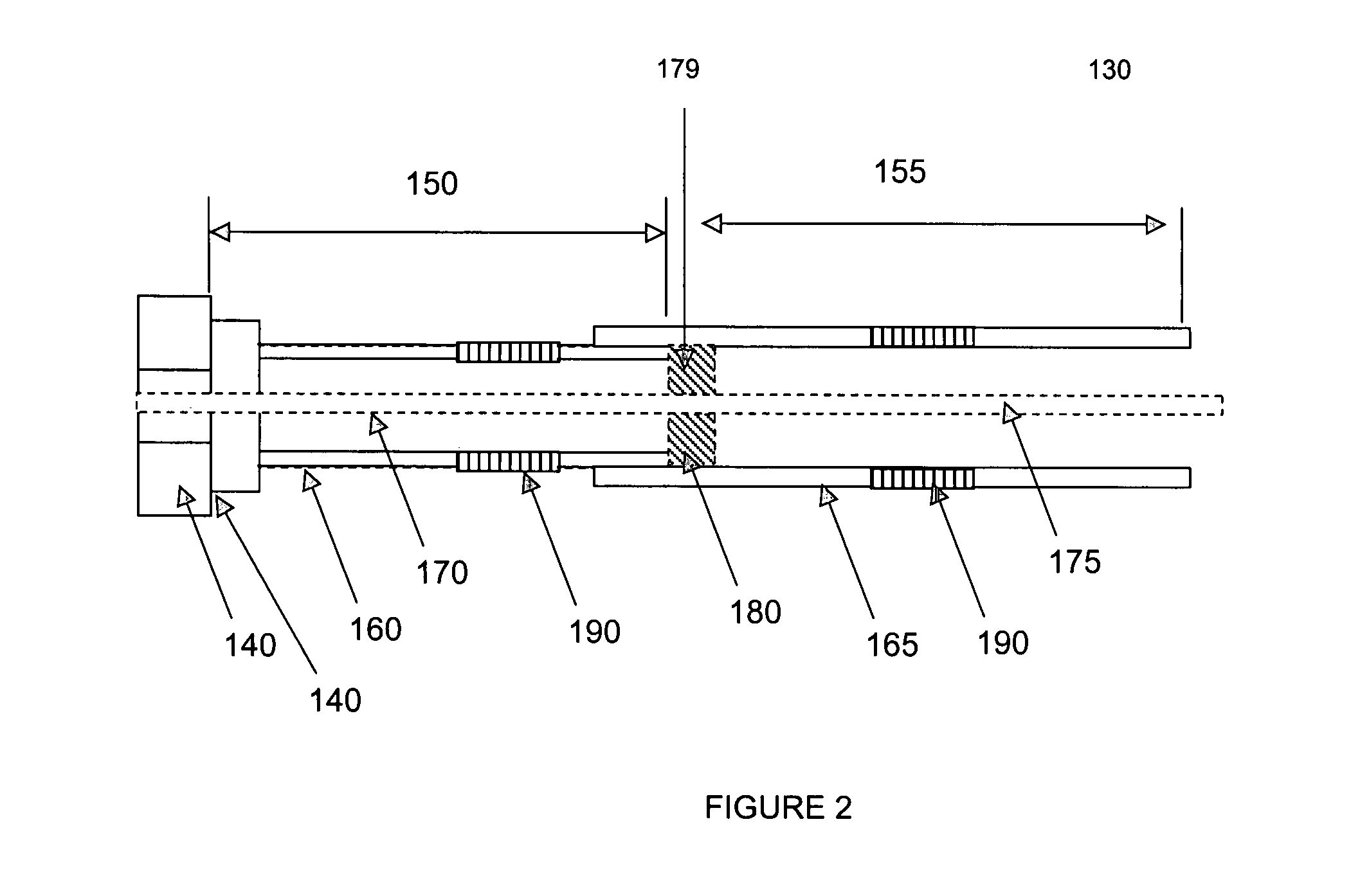Energy delivery system and uses thereof
a technology of energy delivery system and tissue, applied in the field of systems and devices for delivering energy to tissue, can solve the problems of shallow “burns, inability to access deeper inability to achieve deep tumors or arrhythmic tissues, etc., and achieve the effect of reducing undesired heating
- Summary
- Abstract
- Description
- Claims
- Application Information
AI Technical Summary
Benefits of technology
Problems solved by technology
Method used
Image
Examples
example i
[0050] The power loss of several coaxial transmission lines with different combinations of polyfluorotetraethylene (PTFE) dielectric material, air dielectric material, copper conductors and silver conductors was examined. As shown in FIG. 3, a standard copper conductor with a PTFE dielectric cable yielded the highest temperature (˜92° C. at 100 W input power). Removing the PTFE dielectric gave an impedance of 64Ω, which resulted in a lower temperature (˜76 C at 100 W) that was unchanged whether copper (Cu) or silver (Ag) was used for the inner conductor. The lowest temperature (˜66° C. at 100 W) resulted from changing the inner-to-outer conductor diameter ratio to create a 77 Ωohm cable with air dielectric.
PUM
 Login to View More
Login to View More Abstract
Description
Claims
Application Information
 Login to View More
Login to View More - R&D
- Intellectual Property
- Life Sciences
- Materials
- Tech Scout
- Unparalleled Data Quality
- Higher Quality Content
- 60% Fewer Hallucinations
Browse by: Latest US Patents, China's latest patents, Technical Efficacy Thesaurus, Application Domain, Technology Topic, Popular Technical Reports.
© 2025 PatSnap. All rights reserved.Legal|Privacy policy|Modern Slavery Act Transparency Statement|Sitemap|About US| Contact US: help@patsnap.com



